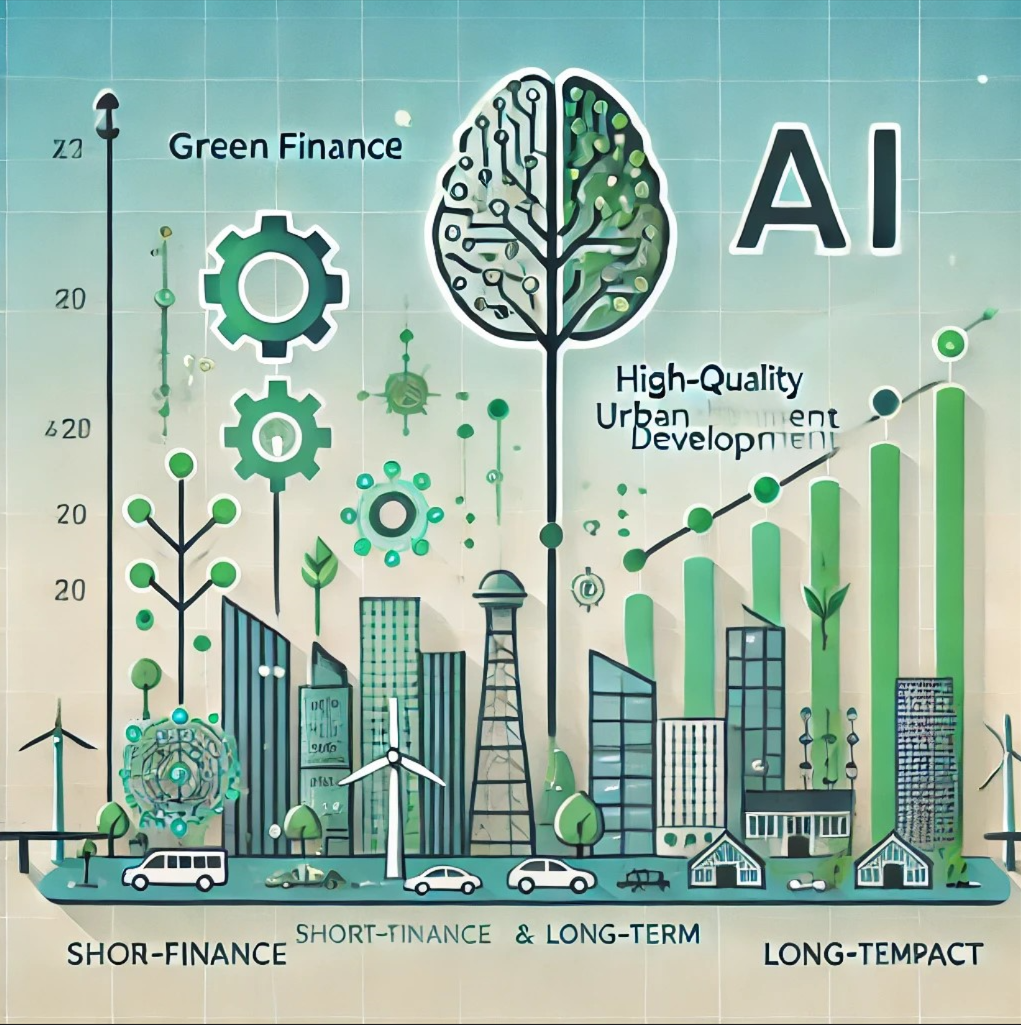
Currently, over 60% of China's population resides in urban areas, contributing nearly 80% to the nation's GDP, creating an urgent and undeniable need for high-quality urban development (HQUD) to secure China’s future economic stability, social equity, and environmental resilience in the face of rapid urbanization. Addressing this imperative, this paper explores the dynamic role of artificial intelligence (AI) and green finance (GF) using the panel dataset of 31 provinces of China from 2007 to 2022. This study makes a novel contribution by jointly estimating the short- and long-run effects of artificial intelligence (AI) and green finance (GF) on a multidimensional high-quality urban development (HQUD) index—an intersection that prior studies have not modelled in a single dynamic framework. We measure HQUD using the entropy method with 12 key indicators of economic, social, environmental, and infrastructure dimensions, AI development using industrial robot penetration rate, and GF through a Global Principal Component Analysis (GPCA)-based index encompassing green credit, investment, and carbon finance. Based on the results of rigorous pre-diagnostic tests, we apply the advanced Autoregressive Distributed Lag (ARDL) model - Pooled Mean Group (PMG) estimation, known for its robustness in handling mixed-order integration in large datasets. The baseline results employing PMG estimation approach show that long-run effects are positive and statistically significant: GF: +2.797 and AI: +0.580 on HQUD. The short-run results show a small yet significant immediate effect for GF (ΔGF: +0.068) but not for AI, while the error-correction term indicates rapid adjustment to equilibrium. The robustness estimates (DFE) confirm the long-run positives (GF: +2.202; AI: +0.352). Regional heterogeneity is pronounced: impacts are larger in central/eastern regions (GF: +3.038; AI: +0.493) than in western provinces (GF: +1.520; AI: +0.395). Policy should expand GF instruments nationwide and close AI infrastructure gaps in lagging regions to accelerate HQUD.
Total file downloads: 20